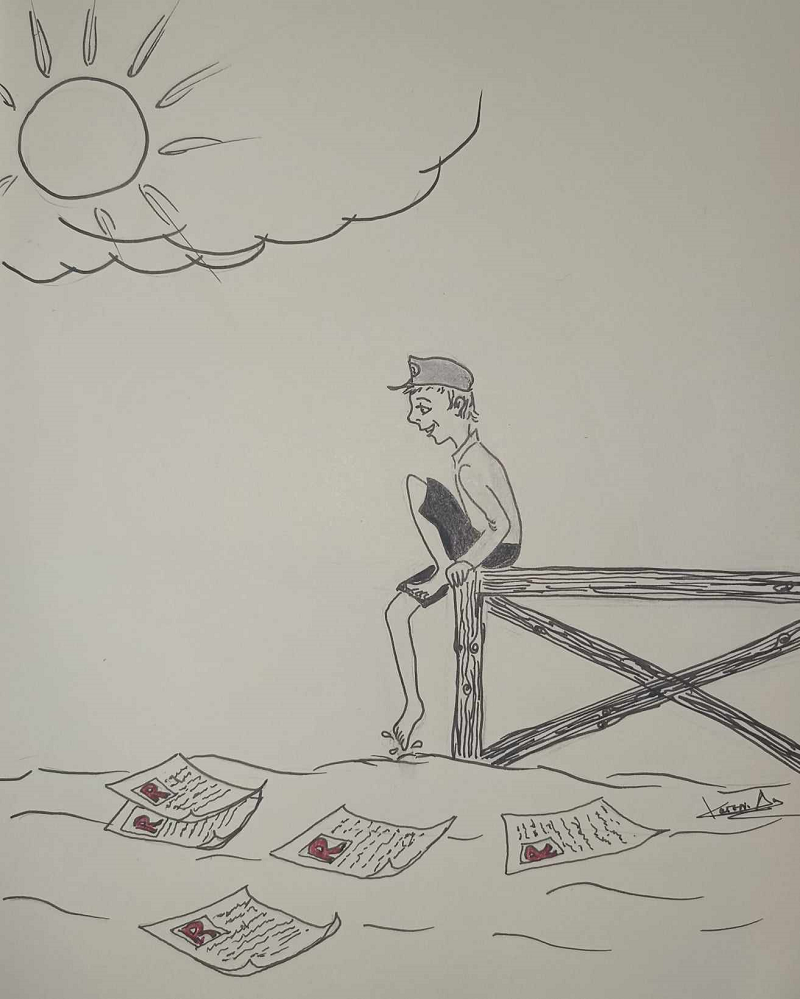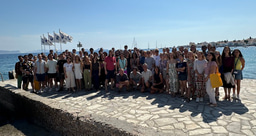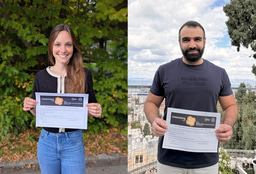Test the waters of preprint communication

“Συν Αθηνά και χείρα κίνει”. This Greek proverb roughly translates to “move your hands and Athena will help”. It stems from an Aesop myth about a shipwrecked man who was praying to the Greek goddess Athena for help instead of swimming. Another passenger told him “move your hands, don’t just pray to Athena” – highlighting we are all responsible for putting in the effort to make things happen for us (and maybe additional help will come). Much like studying for a PhD where the burden for making progress on one’s project falls on the individual and by the end one becomes an independent researcher (with some help). Nevertheless, I have found this to be true when it comes to learning about anything new. The more I dig through resources and the more I read, the more I learn. Of course, this approach can be too chaotic or unfocused and having some help can work wonders on being more precise with searching for resources and identifying current trends and opportunities. For me, the focus has been learning more about preprints, and my Athena was ASAPbio with its Fellows Program.
This program is aimed at early career researchers who are keen to learn more about preprints and how they can benefit research. It’s also a way for individuals to connect with a new research community, as well as consolidate their knowledge and navigate conversations about preprints. Initially, I applied to the ASAPbio Fellows program to find out more about how pre-prints can be incorporated into the scientific world and solidify my rationale and arguments about the benefits of pre-printing research when having conversations with researchers, editors, and other interested parties. Through interactions with other pre-print enthusiasts and attending training and networking events, I hoped to learn from others’ experiences about what has (and what has not) worked regarding increasing pre-print awareness.
Another stimulating aspect of this program was to specifically home in on one pre-preprint initiative and brainstorm what key skills or ideas are needed to engage with scientists and open a dialogue to understand their hesitations or clarify any misconceptions regarding pre-prints. If you want to know more, a past ASAPbio Associate Director has previously written posts on the FEBS Network about the rationale of using preprints and how the Fellows program helps towards this goal.
Becoming an ASAPbio Fellow in 2023, I joined forces with a diverse crowd of students, senior researchers, academics, and preprint experts (ASAPbio staff) to address two main projects: i) identifying alternative uses of preprints via the categorisation of existing preprints and ii) addressing the requirement of some institutions for a peer-reviewed publication as a PhD requirement (potentially replacing it with a preprint).
While these projects are still work in progress, I have already learned some valuable lessons from this experience of working as part of such a diverse and dynamic team. Typically, a programme manager takes the lead in coordinating the teams, defining the scope and focus of the project, as well as takes notes and creates action items at catch up meetings. Fellows are responsible for completing the tasks discussed at meetings and make progress in their selected project. This requires taking the initiative and suggesting ideas during meetings, as well as time management, dedicating between 5–10 hours each month to work on the various tasks.
This programme is suitable for individuals who are self-driven and who can make suggestions and then implement them. Nonetheless, the programme is also flexible enough to cater to individuals with not much time to spare., Although a commitment of around seven months is needed, involvement is not very time-demanding per month and can be manageable. For example, Fellows are not expected to attend all progress meeting and it was normal that people would miss three or four, as there is an understanding that people have other obligations outside of this initiative. Given meeting minutes and tasks are noted down in Google forms, Fellows can keep track at any point of what has been discussed in a meeting and work on the identified tasks whenever they get time.
The future of the ASAPbio Fellows program (in case you want to join!)
The program is improving every year with every iteration, becoming better at catering to the needs of an evolving preprint and peer-review landscape and remaining relevant to current research culture. Despite these changes, the program maintains its character of allowing flexibility in the projects that individuals want to address and how much time they want to invest on reaching specific goals. So, if you have an idea for a project, regardless of how much time you may have, you can become a member of the ASAPbio Community. Additionally, keep an eye out for the 2024 ASAPbio Fellows call around March.
Joining the ASAPbio Community
Whilst the ASAPbio Fellows program could be considered a more hands-on means to learn about preprints and their applications in real time, becoming involved in the ASAPbio Community does not only have to be through that program. The ASAPbio Community is a group of researchers and others involved in research communication who interact, exchanging information and feedback around the use of preprints. Anyone can sign up to receive monthly newsletters, interact via Slack, join community calls where preprint awareness is raised through various talks, and even contribute to projects to promote the use of preprints. So, join the discussion and give pre-printing a chance!

Images by Dr Aikaterini Douka





Join the FEBS Network today
Joining the FEBS Network’s molecular life sciences community enables you to access special content on the site, present your profile, 'follow' contributors, 'comment' on and 'like' content, post your own content, and set up a tailored email digest for updates.